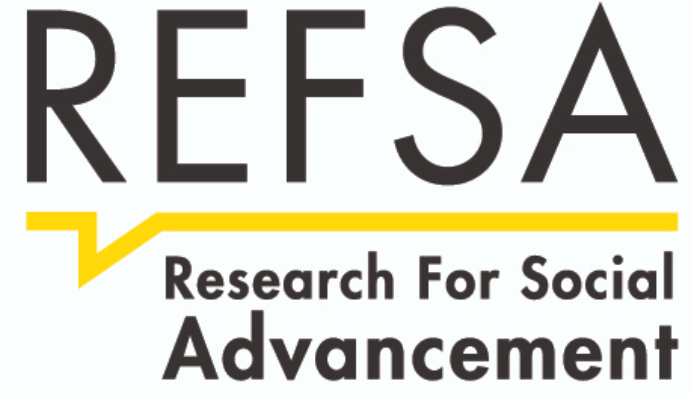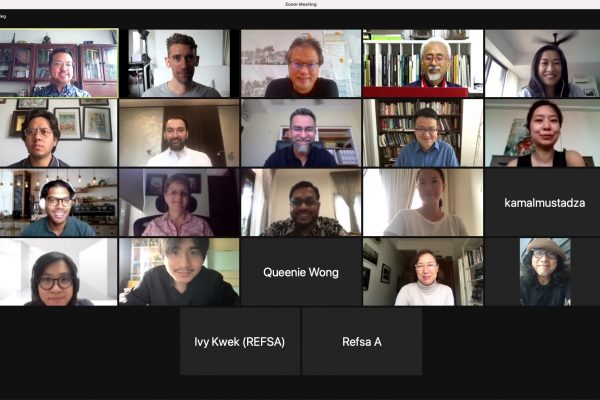Organised by REFSA
The COVID-19 pandemic and its repercussions have unveiled many fault lines in our systems particularly in the way we organise and design our urban areas and living spaces.
As our work, learning, and leisure activities shifted from the physical space to a digital one, urban economies bore the brunt as offices were shut and surrounding businesses were left devastated as they were devoid of customers. This is on top of decades of excessive developments which thinned out the population in city centres, driving residents out to live in relatively cheaper suburbs or new townships. This urban sprawl undoubtedly contributed to other externalities as well, such as mass traffic congestion, carbon emissions, and unscrupulous land clearing among others.
Where does that lead us?
Today’s pandemic is not the first crisis to hit our cities and it will not be the last. The COVID-19 pandemic should trigger a reset amongst us to rethink many societal functions. Thus, a reversal must take place. We have to facilitate the population, especially the youths, to repopulate city centres.
In this closed-door roundtable held on 14 January 2021, we brought together a collective of policymakers, architects, urban planners, elected representatives and finance professionals to drive the exploration of this topic further.
We want to build back better and use this current predicament as an impetus to disrupt the norm and reimagine a new urban model that would build resilience for our cities.
Listed below are some of the summary points from the roundtable.
Urban models of the future
- Cities should reclaim the core role of collaboration, convergence and innovation for the people.
- The old urban growth model of embracing the idea of suburbia and the separation of live-work-play has resulted in an uncontained urban sprawl and high commuting costs, affecting quality of life for all. Most city centres in Malaysia have seen a progressive decline with little investments to make such urban areas functional for people to live, work and play. Urban space efficiency and providing a proper quality of life should now be the key focus to rebuild our cities.
- Rather than building more housing, we should instead, focus on repurpose current ones in the cities to ensure they stay functional but also, importantly, affordable. A key question discussed is “What do we rebuild in our city centres”. There are many older buildings that are either run down or vacant. It is obvious that these need to be repurposed and transformed – vacated office buildings, shop houses, derelict hotels can all become more productive spaces, through conversion into living zones or micro-housing for the youth, office spaces for creative/knowledge/collaboration hubs and public spaces to socialise and enjoy. Examples and new ideas shared also include repurposing bungalows close to the cities into co-living and co-working spaces.
- It is important to listen and understand the needs of the youth so that our cities can fulfil its function of a “hip, cool, savvy, intellectually smart and socially stimulating” space. The youth participants shared and deliberated on what attractive and affordable housing for the young looks like? Do they want to live in the city centres, close to where they work and socialise? There is a consensus of less focus on owning a place but instead, focusing on the quality of life that one leads by living close to “where things happen”. A balance between privacy and communal life is highlighted as important too.
A Mindset shift?
- It is generally agreed that housing should be seen as a public need as opposed to an asset-class investment. A mindset shift of asking ourselves – does everyone need to own a home? Or is it more important that everyone has a comfortable place to live in. The concept of seeing housing as an investment asset needs to disintegrate so that we address the vexing paradox of “empty homes, homeless people”. Public housing driven by initiatives from the government should help push for design of units and public space that enhances usage. Social Housing schemes, Housing trusts or municipal bonds, for example are methods that can be explored as funding models.
- There should be a mindset shift away from equating building social housing projects as just mere corporate social responsibility. It should be economically viable and at the core of developers’ offerings.
- The shift to polycentrism for cities – Discussions of “decentralising” the centre to smaller, multiple centres/neighbourhoods may promote the continued vitality of cities. The feasibility of the 15-minute city showcases the importance of the liveability of the surrounding areas of where one lives.
- We now discover that most of our homes are not “functional” for working as they are designed to be lived in – rethinking homes spaces to be multi-purpose, for living and working.
- Discussion about cities would not be complete without discussing about the transportation network and connectivity within the inner cities. The rise of e-hailing apps has changed the landscape of the transportation system in suburban and inner cities but having said that, there may be a need for an all encompassing mobility approach rather than a selective, either-or approach. In this aspect, ride-hailing should complement, not compete against public transportation. Open data for public transportation will also help public transportation to complement private transportation as a whole within the engagement and willingness of the private sectors.
- Creating sustainable urban housing models should also encompass addressing longer term issues such as climate change.
The role of government, public authorities and the private sector
- The role of the government, the public authorities and the multitude of roles they play is a common thread throughout the discussion. Zoning and planning laws, safety and financial regulations can determine the direction of our housing models. Specifically in the Malaysian context, GLCs and GLICs also have a key role to participate in the social mission to provide more affordable housing and mandate to drive the industry forward. New innovative financial models such as social enterprises should also be explored to play a role in developing good solutions to the problem.
- Rethinking ownership models by leveraging on new forms of financing mechanisms such as different modes of shared equity models. The private sectors and financial institutions should participate in future discussions as they may be better placed to participate in economically viable solutions, and advocate for alternative financing models for repurposing cities and enhancing public housing. Government creating initiatives to ensure certain profit margins for the private sector and making it attractive for them to participate is key to ensure a unique symbiotic relationship between the public and private sector.
- Excessive financialisation of housing has led to the emptying of inner cities with empty residential and commercial units. It is time to relook at this and explore new models. Potential options include Social Housing Trusts in the United Kingdom, or the Nightingale model in Australia which show how spaces can be reimagined for different uses, but still fundamentally retains its original identity of living.
- A robust urban design governance should be created to ensure that cities are built for the right purposes.
Participants
| No | Name | Position |
| 1. | Dato’ Raja Kamarul Bahrin Shah bin Raja Ahmad |
|
| 2. | Dr. Tan Loke Mun |
|
| 3. | Serina Hijjas |
|
| 4. | Hamdan Abdul Majeed |
|
| 5. | Ng Sek San |
|
| 6. | Jalil Rasheed |
|
| 7. | Uta Dietrich |
|
| 8 | Dr. Rajiv Bhanot |
|
| 9. | Joanne Mun |
|
| 10. | Ramachandran Muniandy |
|
| 11. | Kamal Mustadza, CFA |
|
| 12. | YB. Rajiv Rishyakaran |
|
| 13. | Badrul Hisham Ismail |
|
| 14. | Queenie Wong |
|
| 15. | Jowin Foo |
|
| 16. | Lim Li Lian |
|
| 17. | Cheah Ee Von |
|
| 18. | Liew Chin Tong |
|
| 19. | Frederik Paulus |
|
| 20. | Ivy Kwek |
|
| 21. | Tan E Hun |
|
| 22. | Iskandar Fareez |
|

